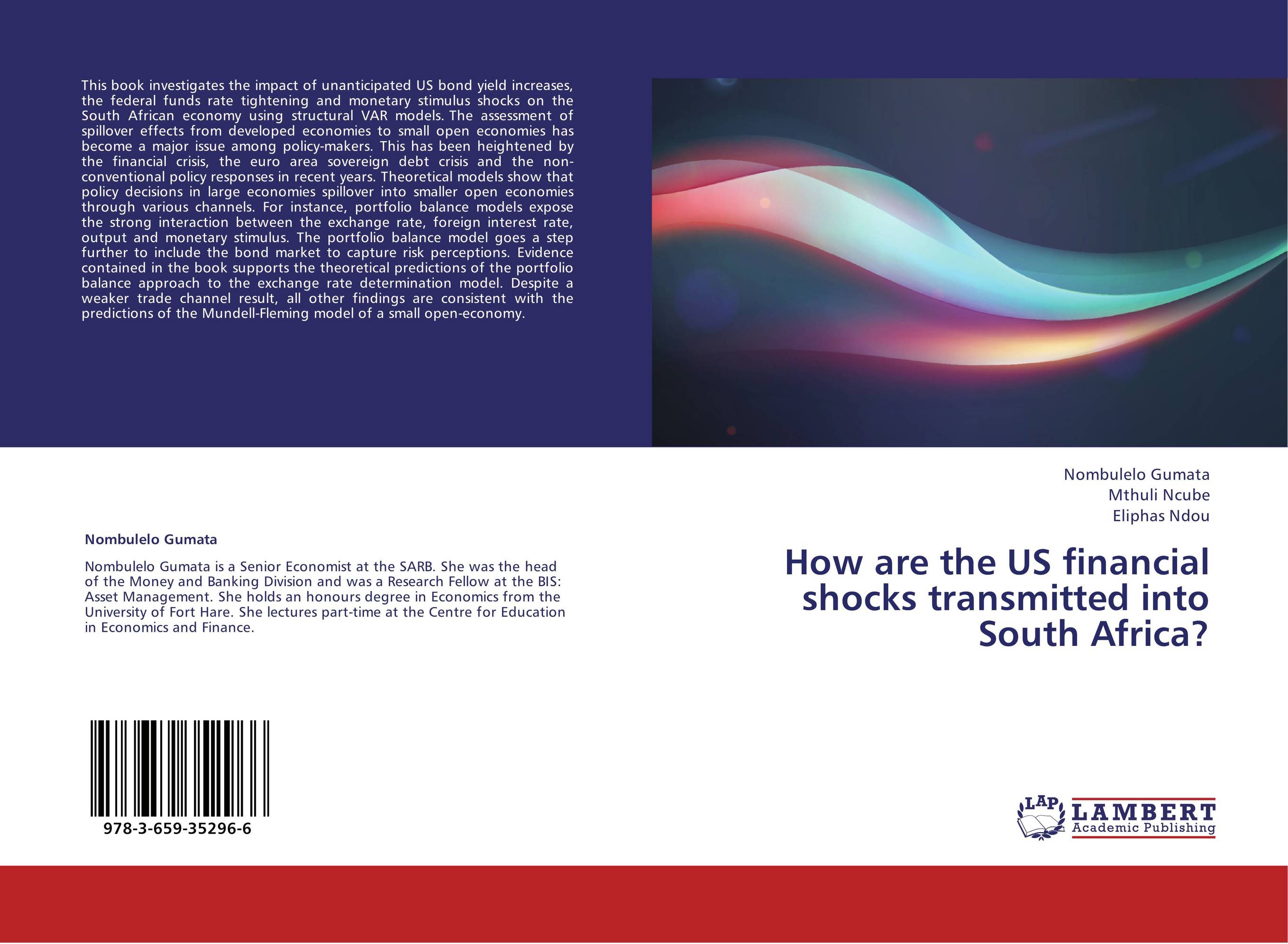| Поиск по каталогу |
|
(строгое соответствие)
|
- Профессиональная
- Научно-популярная
- Художественная
- Публицистика
- Детская
- Искусство
- Хобби, семья, дом
- Спорт
- Путеводители
- Блокноты, тетради, открытки
How are the US financial shocks transmitted into South Africa?.

В наличии
| Местонахождение: Алматы | Состояние экземпляра: новый |

Бумажная
версия
версия
Автор: Nombulelo Gumata,Mthuli Ncube and Eliphas Ndou
ISBN: 9783659352966
Год издания: 2013
Формат книги: 60×90/16 (145×215 мм)
Количество страниц: 60
Издательство: LAP LAMBERT Academic Publishing
Цена: 29790 тг
Положить в корзину
| Способы доставки в город Алматы * комплектация (срок до отгрузки) не более 2 рабочих дней |
| Самовывоз из города Алматы (пункты самовывоза партнёра CDEK) |
| Курьерская доставка CDEK из города Москва |
| Доставка Почтой России из города Москва |
Аннотация: This book investigates the impact of unanticipated US bond yield increases, the federal funds rate tightening and monetary stimulus shocks on the South African economy using structural VAR models. The assessment of spillover effects from developed economies to small open economies has become a major issue among policy-makers. This has been heightened by the financial crisis, the euro area sovereign debt crisis and the non-conventional policy responses in recent years. Theoretical models show that policy decisions in large economies spillover into smaller open economies through various channels. For instance, portfolio balance models expose the strong interaction between the exchange rate, foreign interest rate, output and monetary stimulus. The portfolio balance model goes a step further to include the bond market to capture risk perceptions. Evidence contained in the book supports the theoretical predictions of the portfolio balance approach to the exchange rate determination model. Despite a weaker trade channel result, all other findings are consistent with the predictions of the Mundell-Fleming model of a small open-economy.
Ключевые слова: Monetary Policy, international transmission, macroeconomic interdependence, structural vector autoregressions



